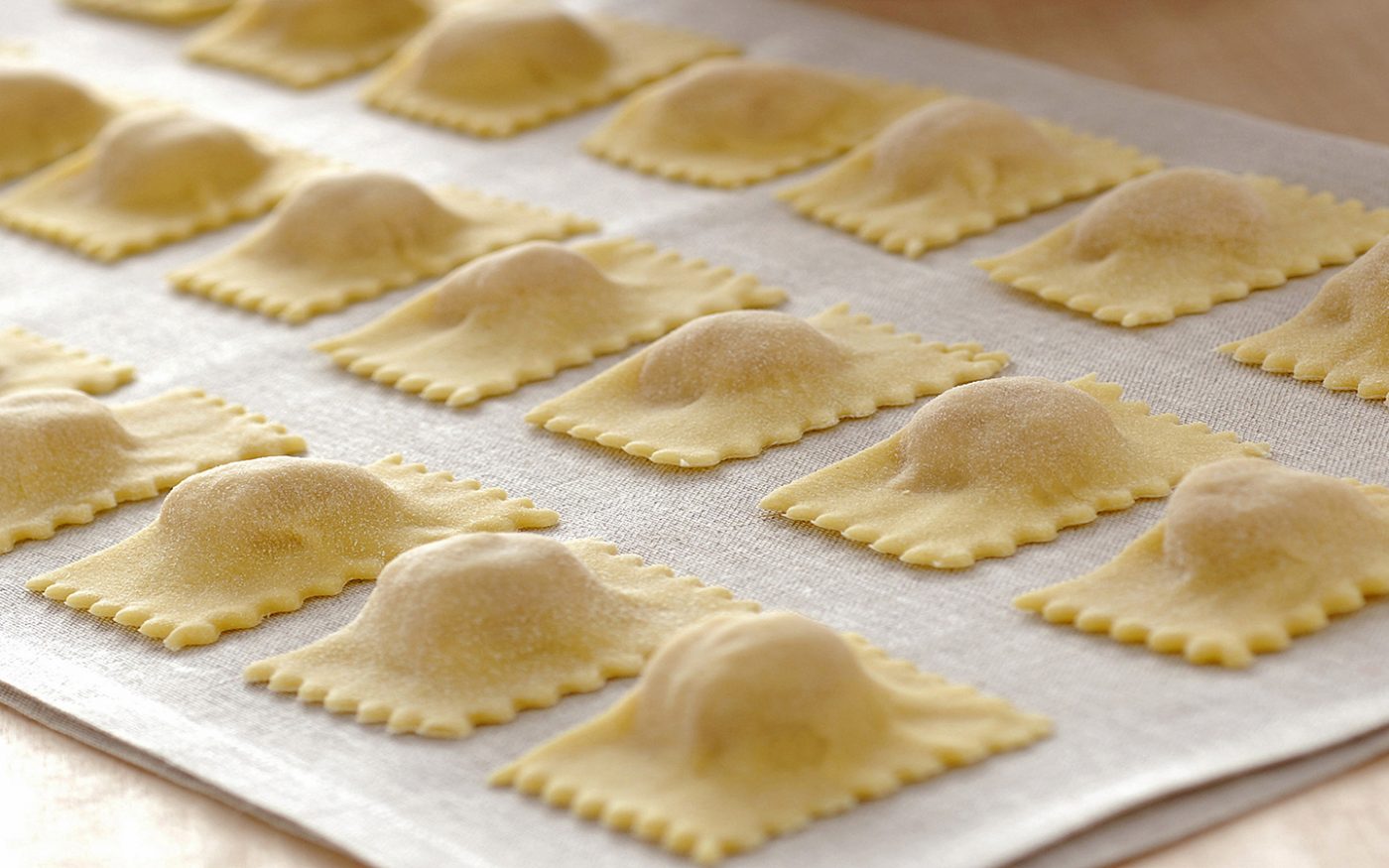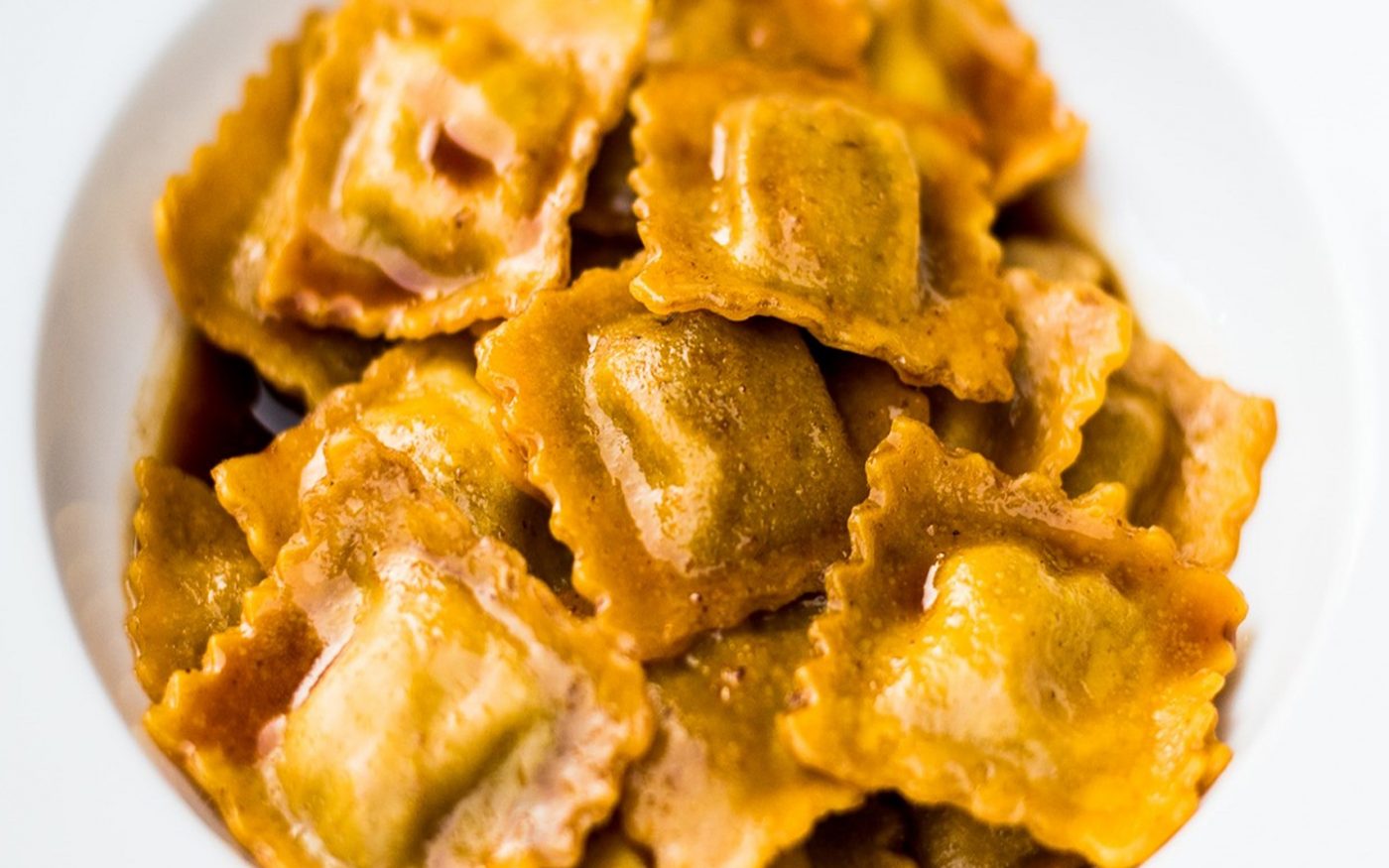Recipes
Agnolotti del Plin with roast sauce


Agnolotti (a type of ravioli) are made with a filling of ground meat and vegetables and put in a wrapping made of pasta with eggs that holds it together.
Cook approximately half a kilogram of pork and veal meat and roast it well with rosemary and garlic.
Finely mince the meat and put it into a bowl, add a small cabbage and a bunch of boiled prickly lettuce that have been cut in small pieces and browned with butter, a handful of grated parmesan cheese, the white of four eggs, a dash of salt, pepper and nutmeg.
Blend all these ingredients with a wooden spoon and then put the mixture aside.
Make the pasta with four egg yolks and 400 grams of flour and roll the dough in thin layers that must not dry.
Place small bunches of filling on the layer of pasta at three centimeters one from another, leaving an empty edge under the filling in order to fold it over. Press around the filling with your fingers.
Then cut it with a jagging wheel obtaining small squares. Leave the agnolotti to dry on lighly floured tablecloths. Let them cook in boiling salted water for a few minutes, drain them and pour the roast sauce on them.

In some parts of the Langa region, veal and pork meat were substituted with rabbit meat that was breeded on the farms since it was a much cheaper meat.
The bones were taken out and the meat was roasted and used for the filling and the preparation of the sauce. This was a delicious variation having a delicate yet appetizing taste, which was invented by the women of the Langa region with great ability.
Other variations in the agnolotti recipe can be seen in the pasta that contains the filling, which can be fairly thick, fine or very fine; difference that can be seen also in the shape which can be square, especially in Alba, or more rectangular or “pessià”, “del plin” in the hillsides that from Alba go all the way to the High Langa region.
The filling has always been perfect, fragrant and balanced and the preparation very accurate.
At home I learned from my father how to eat agnolotti with wine: you put a dozen hot agnolotti that have just been drained in a bowl, and without adding sauce you must cover them right away with Dolcetto wine, eating them one after another with your fork.
Each and every flavor is enhanced and the chef is in for trouble if there is something wrong in the filling or in the choice of the wine: it would be revealed right away.
They say that agnolotti were invented by a French chef in Turin during a state of siege, in a moment when the usual cooking ingredients could not be found anywhere: one day there were some leftovers, flour for the pasta, so this chef decided to chop up and blend the ingredients to combine the flavors, wrapping it all in small boxes of pasta since no eggs were available to keep what he thought an artless filling together.
Even in the agnolotti origin we find some of the usual ingredients found in many of our “poor” dishes (“poor” agnolotti!). This means putting together: an urgent need, insufficient ingredients available and the opportunity not to waste the food that was left on the tables, the simplicity of its base ingredients and the suggestions granted by our imagination.
This is not the only reason why I think the agnolotti invention was wrongly attributed to the chef I mentioned, but rather because they can be found long ago and in all the villages and farmhouses of the Langa region in too many different versions to have been achieved as a local dish.
Here, where they were probably for a long time the sole dish of the Sunday meal, a rare balance of flavors has been achieved in the dry version by employing roast veal and pork in the filling mixture and the roast of the same meats specially prepared to have the gravy for the topping.
The fact remains that roast gravy goes wonderfully with agnolotti and is a dish that your guests will undoubtedly enjoy, and not only at Carnival, in which they still tower as a classic and unfailing food.
